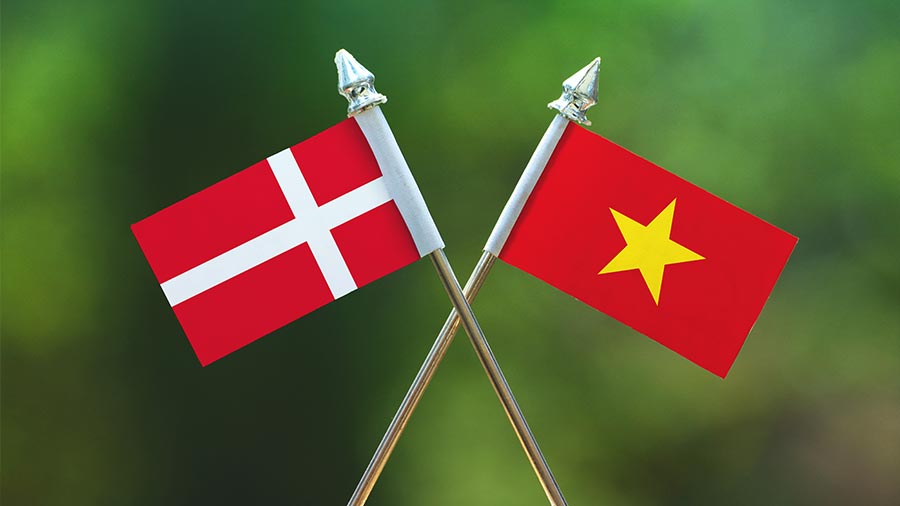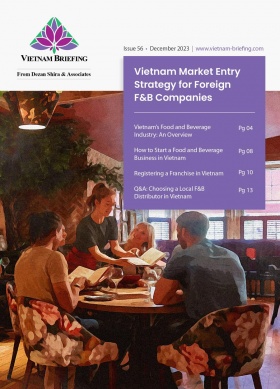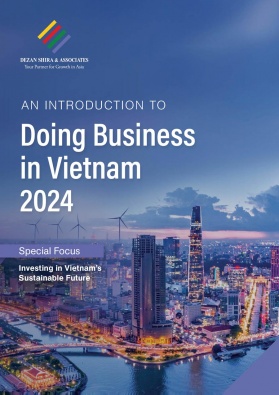Vietnam’s 5G Spectrum Auction: Telecom Companies Enter Bidding Race for Spectrum Licenses
Vietnam has launched its highly anticipated 5G spectrum auction, allowing all telecom companies to participate. The initial auction featured the B1 2500-2600 MHz band on March 7, with more auctions planned for additional bands. This strategic initiative aims to drive the digital transformation of Vietnam’s industries, leading to a new era of improved productivity and efficiency.
After three years of piloting 5G technologies across 55 provinces and cities, Vietnam has decided to fully embrace the global trend of 5G commercialization.
On March 7, the Ministry of Information and Communications (MIC) opened the bidding process for 5G spectrum. The MIC sought to award licenses for the development and exploitation of the 5G 2500-2600 MHz band for the next 15 years.
The beginning of this bidding race marks a historic moment for the Vietnamese telecom sector. The commercialization of 5G does not only represent a new era of technological advancement but also an important opportunity for capitalization for network operators. Moreover, it stands as a driving element in the realization of Vietnam’s Digital Infrastructure Master Plan for the period 2021-2030.
Overview of auction procedures
The 5G auctions introduces a spectrum of bands, spanning from low to high frequency, each unlocking different capabilities. To make use of these bands, the MIC has scheduled three bidding events, each focusing on different 5G bands.
The first auction, held on March 7, 2024, started with offering the rights to use the B1 band block, spanning 2500-2600 MHz. With an opening bid of VND 3.9 trillion (US$158 million), participants were vying for a 15-year license to develop and exploit 5G services across the country.
Particularly relevant in the initial phase of 5G deployment, the B1 band would alleviate the existing congestion on the 4G infrastructure.
Per the auction regulations outlined in October 2023, the winning bidder must deploy at least 3000 5G broadcasting stations using 2500-2600 MHz within two years from receiving the license. These structures are essential to transmit 5G signals to users’ devices and ensure widespread access to high-speed internet.
Furthermore, a commitment to launch commercial 5G services within the first 12 months is also required.
Following this landmark event, two more auctions have been scheduled for the C2 and C3 band blocks, encompassing 3700-3800 MHz and 3800-3900 MHz, respectively. The first band was up for auction on March 14, while the second band will be up on March 19, 2024. The initial price for both bands is set to VND 1.89 trillion (around US$76 million).
This entails that only three telecom companies will be able to secure permits for the development and exploitation of the country’s 5G frequency bands and thereby provide mobile communications services.
Who can participate in the bidding for 5G licenses in Vietnam?
According to the MIC, the auctions for 5G spectrum rights are open to all “eligible enterprises”, without any categorical restrictions.
Nonetheless, despite the absence of legal barriers to participation, industry experts underline the economic efforts inherent in the 5G sector. With the cost of building new 5G infrastructure estimated at around US$1 billion, it is not feasible for outside competitors to outbid existing operators.
Amidst market saturation and dwindling profits, Vietnam currently has five telecom networks with proper infrastructure to support 5G. These include Viettel, VNPT, Mobifone, Vietnamobile, and Gtel Mobile. Among these, the first three hold the most shares of the domestic market and are thereby the most likely to have the necessary resources to win 5G exploitation rights in all three bidding races.
Recent updates from the MIC align with this prediction, with Viettel emerging victorious in securing the license for the B1 band.
Investment outlook
Telecom companies’ strategic investments in securing 5G spectrum bands are key for stable nationwide infrastructure, supporting the Vietnam government’s goal of 99 percent 5G network accessibility by 2030. Telecom operators, inspired by success stories like China Mobile, anticipate substantial returns. With 5G expected to drive development and innovation, Vietnam aims for efficiency gains across sectors, enhancing competitiveness for high-tech investments.
Yet, despite good prospects for the 5G roll-out, its commercialization will not be without challenges. A significant issue lies in the scarcity of devices that are compatible with 5G technology. Currently, only a small fraction of major carriers’ subscribers have access to 5G services; Viettel leads with a share ranging from 17 to 20 percent.
This means operations may not have clear projections of revenue growth at present, thereby limiting their scope of participation.
Addressing these uncertainties will be crucial in realizing the full potential of 5G in Vietnam. After its successful bid, Viettel pledged to address key challenges in how it rolls out 5G services nationwide. It plans to prioritize 5G deployment in locations with both high demand and high percentage of 5G-compatible devices, such as industrial zones, export processing zones, and innovation centers.
About Us
Vietnam Briefing is published by Asia Briefing, a subsidiary of Dezan Shira & Associates. We produce material for foreign investors throughout Asia, including ASEAN, China, and India. For editorial matters, contact us here and for a complimentary subscription to our products, please click here. For assistance with investments into Vietnam, please contact us at vietnam@dezshira.com or visit us at www.dezshira.com.
Dezan Shira & Associates assists foreign investors throughout Asia from offices across the world, including in Hanoi, Ho Chi Minh City, and Da Nang. We also maintain offices or have alliance partners assisting foreign investors in China, Hong Kong SAR, Dubai (UAE), Indonesia, Singapore, Philippines, Malaysia, Thailand, Bangladesh, Italy, Germany, the United States, and Australia.
- Previous Article Vietnam’s 2024 FDI Landscape Poised to See Robust Growth
- Next Article Vietnam Issues Draft Rules on Foreigner’s Electronic Identification Registration































